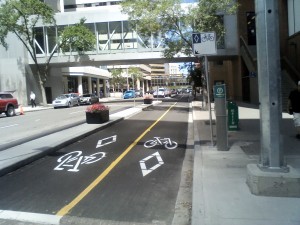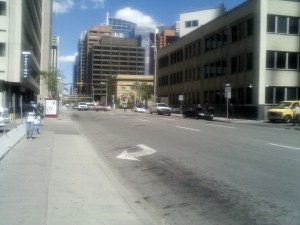An unfortunate reality is that the more critical a resource is to the population at large is, the more likely and effective efforts will be to put the management of the resource fully and directly into the hands of governments. I say this is unfortunate as when a resource is collectivized; a sense of consumer entitlement arises leading to even more consumption and more irresponsible management of the resource.
Few resources demonstrate the above principle more clearly than fresh water. Based on the simple reality that fresh water is indeed essential in life, advocates for intrusive government expand from there in demanding that water never be traded or used as a commodity in a private manner. What is overlooked whether purposely or not is that water already is a tradable commodity and it must be in order for modern society to function. Industry and agriculture have been purchasing water since the invention of canals.
Despite the hysterics of groups such as the Council of Canadians, nobody is really coming to steal or buy all of Canada’s fresh water. Our supply of fresh water as a nation is quite safe. Treated water for household use and consumption however is indeed a resource that is expensive to produce and hard to keep up with citizen’s demands for it.
Last Saturday evening was dedicated as the time for people to observe “earth hour” as designated by the international lobby corporation known as the World Wildlife Fund. Despite ads, gimmicks and general lobbying, Calgary happily ignored the hype and I am proud to report that we as a city showed utterly no change in our energy use as during this hour of greenwashing. The usual suspects in the environmentalist world are of course decrying us as rednecks and enemies of the earth for ignoring their foolish little exercise.
Assuming that Calgarians are indeed the heartless, environment-destroying, capitalist bastards that some in other regions like to try and paint us, how on earth did we manage to be the city with the lowest per-capita water consumption numbers in the country?
What inspired so many Calgarians to install low-flow toilets, track down leaking pipes, use rain-barrels and reduce the amount of treated water that we pour on to our lawns? Was it successful lobbying by Greenpeace and the like with their door-to-door work and flyer drops? Was it ads in the paper wagging collective fingers at us for overconsumption? Was it an earth-shattering speech from a civic leader? None of the above apply of course. The key element in the reduction of Calgary’s domestic water use has been household water metering!
I know that we like to envision society as being altruistic to the point that they will embrace every conservation initiative that is fed to them but in reality it is only self-interest that moves people en masse to change anything. Through making water a measurable commodity that people pay for based on individual use Calgary succeeded where decades of socialized water distribution failed. By simply being charged by the liter and being able to see a measure of household use, citizens were suddenly inspired to seek effective ways to reduce their consumption.
Hipsters do love their irony so they should appreciate the figure below from Statistics Canada.
Chart 4 Households in single-detatched dwellings more likely to use water-saving fixtures

While the majority of our urban density zealots who preach of the wasteful lifestyles of suburbs live in dense neighborhoods (and their parent’s basements in the suburbs), it appears that they have some issues in practicing what they preach. Why is it that the areas most densely packed with environmental idealists are not embracing water consumption reduction initiatives nearly as much as those evil bourgeoisie devils in single detached homes?
The answer is pretty simple; in apartments and other multi-unit dwellings utilities and resources such as water are much more likely to be collectivized. Renters abound and utilities are often bundled in with their rent. Despite high-idealism, direct incentive to reduce consumption is not seen so consumption simply isn’t reduced. Like most socialists, it is expected that somebody else has to do it but the demands on everybody else are to be shrill, sanctimonious and as can be seen, often hypocritical.
The principle of making a resource a commodity in order to control consumption works pretty much anywhere. Environmentalists love to screech indignantly at the practices of logging companies. One would assume that crown land under the tight scrutiny and control of government would be where best practices would occur then no?
In reality, private woodlots are far more efficiently managed than crown lands. While only 11% of Canada’s woodlots are privately owned, 19% of our timber products come from them. Private woodlots are carefully managed for erosion control, esthetics and of course productivity. Sustainability and replanting are critical simply due to the element of self-interest in maintaining a healthy, balanced forest. That is not to say that no sustainable practices are done on public lands, this is just pointing out that private practices prove to be superior to public management.
If public ownership of resources were the key to wise environmental practices and sustainable growth, China would be leading the world in clean industry.
If public ownership of critical resources led to more efficient production and a sustainable cost of living, Soviet Russia would have had the most stable food supply on the planet. Google bread-lines or starvation in Ukraine to see what happens when government is given the management of a resource simply on the premise that because it is critical that it should not be left in private hands. Food is a need. Despite that, government management of food has always proven to be a failure with extremely dire consequences.
We need to keep these principles in mind when looking at other resources too. Where are our largest areas of public expenditure? Where are these expenditures growing the fastest?
Healthcare and education prove to be the most important issues to voters and both are proving to be unsustainable to the public purse. Because of massive government subsidization and control, a sense of entitlement has caused an unsustainable trend in demand and direct management of these resources. Nations are going bankrupt around the planet due to entitlements and as we see all levels of government in North America spending far more than they bring in it is clear that we are heading towards a crash as well.
Water and food are needs and we have found that treating them as commodities has been the best way to ensure that these needs are sustainably managed for all. Healthcare and Education are needs as well yet we refuse to recognize them as commodities due to flawed and outdated ideologies.
It should not be an entitlement to go to an emergency room without direct personal cost every time your child has the sniffles nor does every child need post-secondary education. Treating healthcare and education as commodities would mean directing resources towards real need rather than entitled wants. This is not to say that we need to move to a fully private model for either of these areas by any means. What this means is that we have to change how we look at these resources in a new way if we really actually want to conserve them in the most responsible manner.
Whether we like it or not, government resources are finite. We simply can’t fund everything to keep up with every entitled demand by interest groups. We have to look at supply realistically before trying to fill every demand.
I know people fear private provision of services. If we continue to live beyond our collective means as we are now though, the dog-eat-dog system that will come post-crash will make controls that we could make now appear to be a cake-walk. Have a look at Spain, Greece or Russia for examples.











